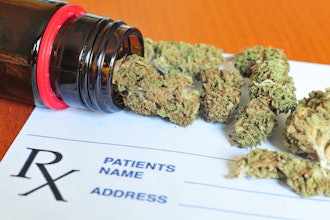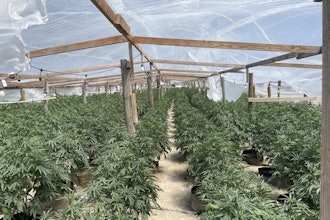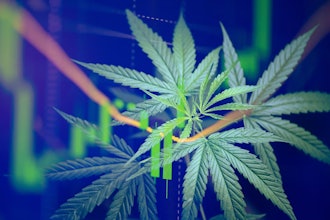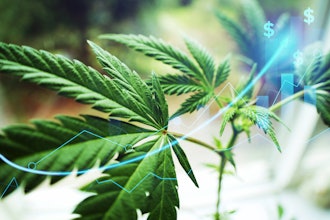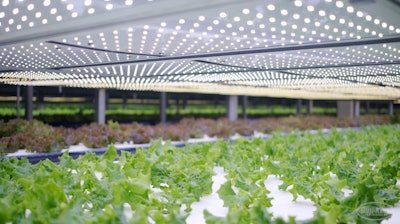
The future of agriculture is on the horizon—one where technology will be leveraged to provide greater control over nearly every aspect of the growing process and beyond. These technologies, including automation, artificial intelligence (AI) and machine learning (ML) make precision farming a reality by generating new insights and enabling cutting-edge capabilities that haven’t been possible with traditional agriculture processes. Now, with new information in hand, growers and farmers can dig deeper and understand exactly how to get the highest quality yield from each species they work with, all while using less energy and resources than previously needed. This is sustainable farming brought to life to better support and cater to our changing planet.
When agriculture stakeholders embrace and harness emerging technology to create true connectivity across the growing and food distribution processes, they’ll not only overcome many of their current challenges, but every decision they make will be outcome-based as well. Growers and farmers aren’t looking for or in need of new solutions that simply sound exciting or end up creating more work for them; they need real-world systems that solve their real-world problems, and fortunately, there are technologies readily available that help with exactly that.
Industry Challenges with Widespread Impact
The agriculture industry has been navigating the same issues as other industries in recent years – and then some. As inflation rises, farmland could be hit with long-term rates that alter purchasing decisions; ongoing supply chain challenges are impacting the availability of critical components needed to keep equipment running smoothly; and up-for-debate farming policies could influence future food pricing.
However, there are other deep-rooted challenges within the industry as well—challenges that not only impact growers, farmers, and their partners and suppliers, but the world at large:
- Population growth: In November 2022, the global population reached eight billion, only 11 years after surpassing seven billion. It was reported that much of the growth (70%) has come from low- and lower-middle-income countries, where the growth trend is likely to become more pronounced in the years ahead. A rapidly growing population creates the need for more food and faster food production, yet many of these regions are also impacted by increasingly intense changes to their climates, which have negative implications on their ecosystems and, therefore, their food quality and security.
- Food waste: What happens after food leaves the farm – tracking where it goes and how it gets there – is a step within the food distribution process that’s in need of serious attention. An estimated 30-40 percent of the U.S. food supply is wasted. This occurs for a variety of reasons, whether the food’s spoiled from going out of temperature range because of a stalled shipment or faulty forecasting by retailers and restaurateurs that results in overordering. Unfortunately, this amount of wasted food could feed 1.26 billion people every year.
- Labor shortage: Steep machinery and technology investments, unpredictable and intense weather patterns, rising land prices and volatile pricing models are only a few reasons the younger generation has been reluctant to pursue careers in the agriculture industry. Today, farmers under 35 represent only 8% of all U.S. farmers, and there’s been a 52% decline in hired farmworkers as well. The labor shortage is intensifying just as the need for more and faster food production is rising.
Individual businesses are grappling with their own unique business challenges on a daily basis, but the implications of their choices and how they approach the future of their operations have an impact on everyone. In other words, the pressure is rising. Agriculture practices need refinement now in order to tackle the challenges of today and those we anticipate seeing years from now.
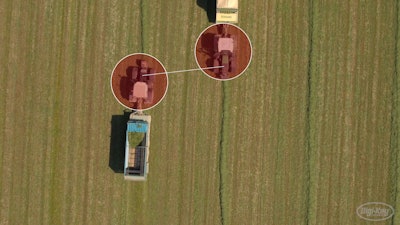 Digi-Key
Digi-Key
Digitizing the Farm and Beyond
The agriculture industry is a proud, resourceful market where growers and farmers literally solve problems and experience success with their own two hands. They know their setup, they know their farms and they know the issues they’re facing. These stakeholders aren’t looking at technology as a silver bullet that can fix all their problems, though they are continuously thinking of new ways to address issues—and many are coming around to the idea that technology can aid and ease their efforts.
When it comes to reducing waste and implementing more sustainable practices, it can feel counterintuitive to introduce more. Electronics, especially, aren’t the first thing that comes to mind when approaching sustainability. Yet, if used properly, new solutions can reduce waste as well as the number of resources that are used and needed, bringing more sustainable, efficient options to light for food production. Technology can create a digital thread from the farm to the end user, which is not only desired today but required for both food safety and security and business resiliency.
For example, as our population grows, one of the easiest ways to make up for it is to reduce waste in the products that are already being created and shipped. There are technologies now that can better monitor food through the supply chain to prevent excess waste. Airgain, a provider of wireless connectivity solutions, leverages wireless cellular modems to connect, monitor and control various touch points within an operation. They can implant tracking devices on a shipment of food to track temperature, position and location and share that information and any potential changes to the shipment in real time. This creates a better sense of connectivity throughout the entire process; stakeholders know when food leaves the farm and when it arrives at its end destination as well as anything that occurs in between, which helps inform and refine the shipment process to reduce spoiled product and overall waste.
Forced to do more with fewer resources as the labor shortage holds strong, growers and farmers are adopting automation solutions that allow them to both sustain current operations and maintain the quality of their products. Semios, a precision-farming platform, implemented a remote monitoring solution throughout a vineyard in Italy to optimize its productivity. Grapes are a highly sensitive crop, so it's important for them to closely track and monitor soil moisture and heat, especially as many growers are starting to experience changing climate conditions that impact their crops. With a network of sensors from Semios, vineyard growers can keep an eye on their whole field without any manual monitoring (i.e, sending someone out to take notes). This provides an extra layer of visibility into their operation that didn't exist before, while also maintaining (or even reducing) the same number of workers needed to monitor the grapes.
Digitizing the farm and beyond is well underway for many agriculture stakeholders, and it’s starting to bring to life an industry that’s more capable and connected than ever before.
The Future is Connected
Understanding what’s occurring at the ground level – hearing from the farmers themselves – helps to provide a sense of what daily operations are like within everyday agriculture and how the methods in which food is produced impact the environment. Now, as food production scales, it’s time to dig deeper and look at the component level and how technology is currently being used today. New innovations in agtech, like advanced automated sensors, and new approaches to growing like vertical farming and industrial-sized indoor farms are quickly becoming integral to securing a future for the industry—and are undoubtedly helping growers and farmers rethink what’s possible.
For example, instead of managing extensive farmland, vertical farming takes growing down to a much smaller space, where all the nutrients, resources and light that are needed for the crop are provided in a controlled area. Growers are able to detect patterns using advanced AI and ML technology to ensure the crop only receives as much light and water as needed to maximize and optimize the yield.
Miravel, a company that designs automated indoor wall gardens, has developed small packs full of seeds, nutrients and anything else needed for growing herbs and produce, and they install the packs in racks that are then pushed into a vertical farm. Each rack has sensors for moisture, temperature and light that tell a story about the growth of the plant; then, when more water is needed, there are automated water pumps that feed the rack. It’s a truly connected system that operates on real-time data with an output that’s sustainable, safe and high quality.
Agriculture stakeholders – growers and farmers, their partners and suppliers – value their resources. They only want to use the water, nutrients and chemicals absolutely needed to keep their crops healthy and safe. They value the knowledge of knowing what the soil moisture should be and how different weather patterns can impact their crop. They’ve inherently always wanted to be precision growers and farmers because their resources are precious. Now, through connected sensors and networks, advanced algorithms and real-time visibility, they can bring precision, sustainable farming to life. Their operations can use less energy, reduce waste and be more efficient with the aid of modern solutions. The possibilities are endless—the future of agriculture is looking connected and greener than ever.
Josh Mickolio is supplier business development manager-wireless and IoT at Digi-Key. Digi-Key is both the leader and continuous innovator in the high service distribution of electronic components and automation products worldwide, providing more than 13.4 million components from over 2,300 quality name-brand manufacturers.











